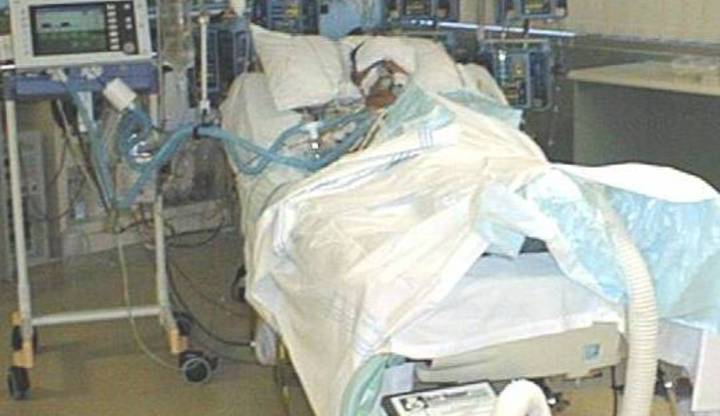ICU Equipment
An ICU will contain a variety of specialised equipment and may vary from one unit to another depending on the patients they are treating. For example, a neonatal ward will have incubators for critically ill babies.
Machines in an ICU will make a varierty of sounds including bleeps and alarms. These sounds help to make the staff on the ward aware of slight changes to a patient's condition or alert them to an issue that requires attention. Most alarms just indicate standard monitoring.
Some of the main ICU machines and what they do:
- Ventilator
If your lungs are not working correctly leaving you unable to breathe on your own, you may be attached to a ventilator. This machine will help move oxygen enriched air in and out of your lungs. Patients on a ventilator will normally be sedated to make the ventilator more tolerable. If you only require assistance for a short while, you will have a tube from the ventilator placed in your windpipe, usually through your mouth but sometimes through your nose. If you require more help for a longer period, you may have a short operation called a tracheostomy. The tube in your mouth will be replaced by a shorter tube that is placed directly into your trachea (windpipe).
- Monitoring equipment
Wires may be attached to various parts of your body using sensor pads, which are then linked to a screen. These will help to measure important bodily functions. They will track many tiny changes in your body and will alert ICU staff if there are any changes that could be dangerous. These measurements will include;
- heart and pulse rate (measured by an electrocardiogram or ECG)
- air flow to your lungs
- blood pressure and blood flow
- pressure in your veins (known as central venous pressure or CVP)
- the amount of oxygen in your blood
- your body temperature
- heart and pulse rate (measured by an electrocardiogram or ECG)
- IV lines and pumps
These are tubes that are inserted into a vein in your arm, chest, neck or leg and provide a steady supply of essential fluids, blood, vitamins, nutrients and medication. A tube into your main veins in your neck is called a central line. The tubes are usually connected to one or more bags of fluid that hang from a drip stand/pole and may be attached to a pump that will help to regulate the supply of fluid.
- Kidney support
If your kidneys are not working correctly, a haemofiltration machine can help replace their function. During filtration your blood will go through the machine to remove the waste products. It will then be returned to your body.
- Feeding tube
If you are on a ventilator to help you breathe, you will not be able to swallow normally. A feeding tube will be placed in your nose, down your throat and into your stomach. This tube will help to provide liquid food that will contain all the nutrients you require in the right amounts, including protein, carbohydrates, vitamins, minerals and fats. If your digestive system is not working, nutritional support can be fed directly into your veins.
- Drains
Sometimes after surgery tubes called drains may be used to remove any build up of blood or fluid at the site of a wound. These are normally removed after a few days.
- Catheters
Thin, flexible, tubes called catheters may be inserted into your bladder to help allow urine to be passed out of your body. You may also have a clear bag hanging from the side of your bed, which is called a Foley catheter. This is connected to the tube inside your body and is used to measure the amount of urine you produce. This can help staff to see how well your kidneys are working.
- Suction pumps
Sometimes a suction tube is passed down your breathing tube and then attached to a suction pump. These will be used to remove excessive phlegm and help to keep your airway clear.





